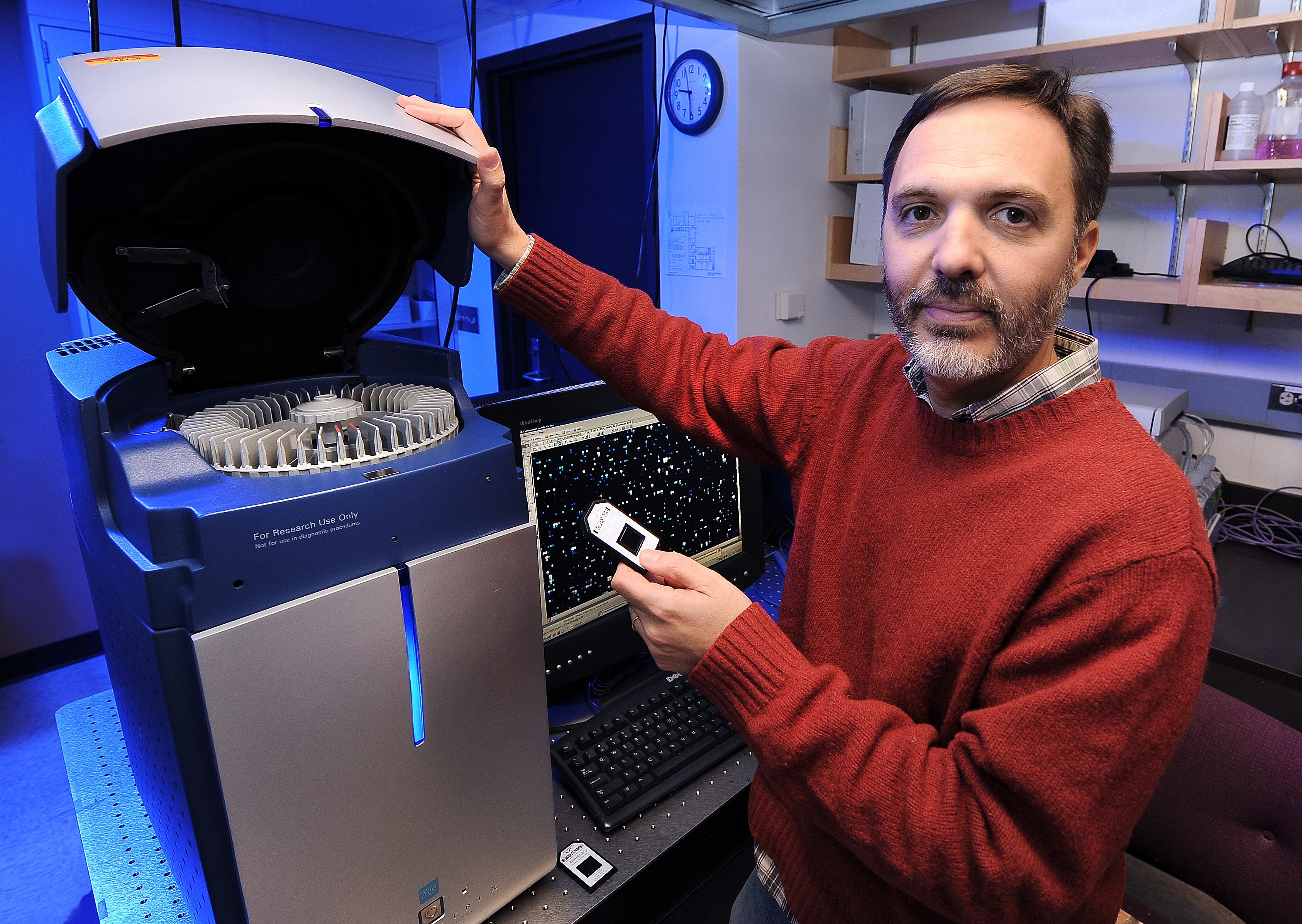
A recently published study co-authored by Gustavo MacIntosh found that prolonged aphid attacks weaken genetic defenses in soybeans. Large photo. Photo by Robert Elbert.
AMES, Iowa – Aphids, the tiny insects that have become a primary threat to Iowa soybeans in recent years, possess a unique ability to block the genetic defense response of soybeans and may open the door for other pests to do even more damage to crops, according to a recent study by researchers at Iowa State University.
The study, published recently in the journal Molecular Plant-Microbe Interactions and made possible through grants from the Iowa Soybean Association and the ISU Plant Sciences Institute, found that aphids essentially can short-circuit the hormonal defense mechanism in soybeans meant to combat insect infestations. The change may make it easier for other pests, such as the soybean cyst nematode, to colonize the plant as well, according to the study.
“After about seven days, a successful aphid infestation can hijack the plant’s defense response. The soybean plant initially puts up a defense, but that response is gone after about a week,” said Gustavo MacIntosh, co-author of the paper and an ISU associate professor in the Roy J. Carver Department of Biochemistry, Biophysics and Molecular Biology. MacIntosh co-wrote the paper with Matthew Studham, a graduate student in the ISU Bioinformatics and Computational Biology program.
Aphids emerged as a serious threat to Iowa soybeans around 2000. The insects are native to Asia and most likely came to the United States on international travelers or plants brought into the country. In the years since, aphids have caused soybean farmers major headaches, reducing yields in affected fields by up to 40 percent, MacIntosh said. Their presence in a field may require farmers to have insecticides applied, which increases the costs of crop production.
The study focused on the effect aphids have on soybeans after prolonged infestation, MacIntosh said. The presence of aphids initially activates a biological defense mechanism in soybeans, but a successful aphid infestation blocks the soybean plant’s natural defenses in about a week by making the plant ‘think’ that it’s experiencing environmental stress, he said.
When that happens, the soybean plant goes through a number of changes, from its leaves all the way to its roots. These changes explain why aphids make plants more susceptible to soybean cyst nematode infection, as shown previously in research MacIntosh conducted with the laboratories of Matt O’Neal, an ISU associate professor of entomology, and Greg Tylka, an ISU professor of plant pathology and microbiology. That work was published in January and was supported by soybean checkoff funds from the Iowa Soybean Association.
The increased susceptibility to nematodes after an aphid infestation even occurred in soybean varieties that are genetically resistant to the soybean cyst nematode, Tylka said.
“The nematodes reproduce better if there is a successful aphid infestation. On the other hand, nematodes have a negative effect on aphid populations,” Macintosh said. “This seems to be a rare relationship between different species of pests.”
Macintosh said he hopes that his research will lead to soybean varieties that will be more resistant to aphids and other pests. Tylka added that MacIntosh’s work may also help to predict the response of soybeans when new pests arise in the future. Such advances ultimately will lead to more consistent production and make soybeans more profitable for farmers, Tylka said.